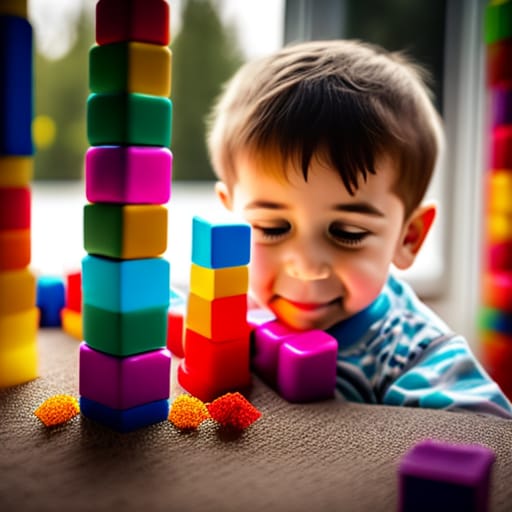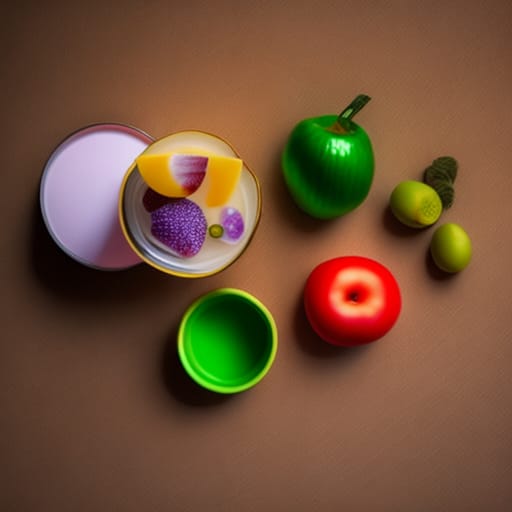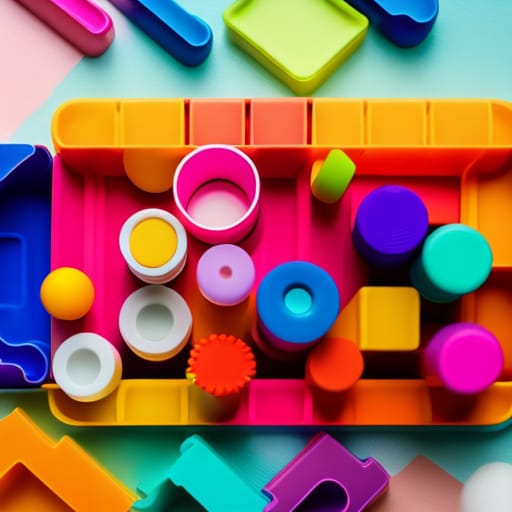As a parent of a toddler, you may wonder which toys are best for keeping your little one engaged and learning. With so many toy options out there claiming cognitive benefits, it can get overwhelming trying to choose the right ones. The good news is that you don’t have to buy out the whole toy store to promote healthy development.
When selected thoughtfully, the best toddler toys build critical skills in key developmental areas while capturing your child’s natural curiosity and imagination. This article covers everything you need to know about choosing the top toys that delight and teach toddlers.

Why Playtime is Critical for Toddler Development
Play allows toddlers to explore, be creative, and make sense of the world around them. More than just fun and games, play time aids essential cognitive, motor, social-emotional, and communication development during the toddler years.
As your child interacts with toys, their brain forms neural connections that build learning pathways. Toddlers also practice critical life skills through play like problem-solving, coordination, and language. Toy play exercising both sides of the brain promotes healthier development compared to screen time entertainment.
In short, playtime provides a spectrum of developmental benefits that will serve your child well as they continue growing.
“The way the brain develops is use-dependent—the more you use specific pathways, the stronger they become.” – Dr. Daniel Siegel, Clinical Professor of Psychiatry at UCLA School of Medicine
Top Skills Learned Playing with Toddler Toys
So what exactly will your toddler learn from the hottest toys on the market? Here are the top developmental skills toy play builds:
Fine Motor Skills
- Coordination – Using fingers and hands with precision
- Dexterity – Grasping, touching, manipulating objects
- Visual tracking – Following moving objects with their eyes
Gross Motor Skills
- Balance – Maintaining body equilibrium
- Full body movement – Crawling, walking, jumping, dancing
Cognitive Skills
- Cause and effect – Understanding action and reaction
- Problem-solving – Finding solutions through logic and reasoning
- Organizational skills – Sorting, classifying, sequencing
- Numeracy – Basic counting and number recognition
- Shapes and colors – Identifying different geometric forms and colors
Language and Literacy Skills
- Communication – Building vocabulary and articulating words
- Listening – Increased auditory processing from verbal interaction
- Early reading – Recognizing letters, symbols, and some written words
Social-Emotional Skills
- Self-esteem – Sense of competence and confidence from accomplishing tasks
- Emotional regulation – Learning to handle frustration and control intense feelings
- Cooperation – Playing harmoniously with others by taking turns and sharing
With a well-rounded toy collection that builds all these skill areas, you can feel great about your toddler’s development.
“Play is often talked about as if it were relief from serious learning. But for children, play is serious learning. Play is really the work of childhood.” – Mr. Rogers
The 6 Best Types of Toys for Toddlers
Not all toys support learning and development equally. With so many playthings to consider, narrowing it down can help guide your buying choices. Here are the top 6 toy categories for toddlers along with their key benefits:
1. Blocks and Stacking Toys
Benefits: Problem-solving, spatial reasoning, mathematical skills, coordination
Blocks allow toddlers to explore principles of geometry, gravity, and spatial reasoning. As they stack, balance, and knock down creations, toddlers hone fine motor control. Simple patterns teach early math concepts like counting, addition/subtraction, and fractions. Block play also encourages creativity, imagination, and collaboration with others.
Top picks: Wooden alphabet/number blocks, nesting blocks, soft stacking blocks, magnetic tiles
2. Push/Pull Toys
Benefits: Gross motor skills, balance, coordination
Push/pull toys let toddlers practice walking, steering, stopping, and balancing. The motion and speed gives feedback to toddlers about cause-and-effect relationships. These riding toys encourage exploration of surroundings which builds spatial/directional awareness. They also nurture independence as toddlers move around on their own power.
Top picks: Activity walkers, wagons/carts, ride-on toys, bubble mowers
3. Shape Sorters and Puzzle Toys
Benefits: Problem-solving, organizational skills, fine motor skills, shape/color/letter recognition
What could be better than playing with toys and learning at the same time? Shape sorting toys do just that by helping toddlers distinguish between a circle and a square or match uppercase to lowercase letters. As puzzle lovers know, there’s immense satisfaction gained from completing challenges. Sorting/puzzles nurture logical thinking, spatial relations, sequencing, and categorization.
Top picks: Peg puzzles, wooden shape sorters, lacing toys, matching games
4. Pretend Play Toys and Dress-Up Clothes
Benefits: Creativity, imaginary play, language development, emotional intelligence
Fantasy role playing allows toddlers to recreate what they see around them. Setting up a pretend grocery store, restaurant, or classroom builds narrative skills and emotional IQ as tiny customers order play food and assign roles. Dress-up clothes lend authenticity while enabling expression of identities. The language used mimicking real-world scenes accelerates vocabulary in context.
Top picks: Play kitchens/food, toy phones, doctor kits, cash registers, costumes
5. Toy Vehicles, Action Figures and Dolls
Benefits: Narrative/storytelling, emotional regulation, critical thinking, cooperation with others
What toddler isn’t enthralled watching cars zoom and crash or epic battles between good guys and villains? Toy vehicles, action figures, and dolls promote storytelling which stretches imagination and language skills. Negotiating play scenarios with others teaches empathy, conflict resolution, sharing, and problem solving. These toys also aid sequencing, counting pieces, and fine motor grasping.
Top picks: Model cars/trucks, mini action figures, baby dolls and accessories
6. Art Supplies and Craft Kits
Benefits: Fine motor skills, visual-spatial skills, creativity, color/shape recognition
Unleash the inner Matisse or Monet with a deluxe art set designed for toddlers complete with fat crayons, markers, and an array of paper. Craft kits take creating up a notch by providing pom poms to glue, pipe cleaners to twist, and googly eyes to stick onto masterpieces. Art toys build fine motor dexterity while enhancing spatial reasoning arranging designs. Seeing that formerly blank page transform colors even non-Rembrandts with pride.
Top picks: Washable crayons, dot art markers, stickers, lacing cards

Top Characteristics of Quality Toddler Toys
With so many toy choices on the market, focus on the following characteristics when buying to ensure quality:
Educationally beneficial – Nurtures learning across key developmental domains
Engaging and captivating – Holds toddler attention with interesting activities
Promotes discovery – Allows for exploration and problem solving with flexible outcomes
Easy to manipulate – Fosters independence with child-friendly use
Facilitates pretend play – Cultivates creativity, role play and interaction
Responsive feedback – Provides sensory confirmation of actions
Reinforces successes – Motivates with colors, sounds, and patterns
Durable – High-quality safe materials withstand repeated use
Facilitates interaction – Encourages back-and-forth exchanges and sharing between partners
By prioritizing toys with these traits, you can provide fun while giving your toddler’s development a big boost.
Setting Up a Toddler Play Area at Home
Creating a designated play space for your toddler ensures their toys get maximum use while keeping the rest of your home relatively tidy. Use these tips for setting up an organized, engaging play area:
Rotate toys – Cycle different toys in and out to maintain freshness factor
Stimulate senses – Incorporate tactile elements like cushions, rugs, soft lighting
Define spaces – Devote areas for building, pretend play, reading
Use storage totes/bins – Makes cleanup easier and teaches sorting
Add child-size furniture – Tables, chairs, easels for little bodies
Display toys attractively – Open shelving with bright baskets keeps areas decluttered
Add safety proofs – Use corner cushions, edge bumpers, door knob covers
Mix open spaces and cozy nooks – Blanket forts for privacy alternate with room to roam
Consider mess mitigation – Washable paints and mats under easels
Adapt as child grows – Includes toys aligned with developing abilities
Making playtime a priority does wonders for nurturing happy, healthy toddlers!

Final Thoughts on Promoting Learning Through Toddler Toys
The old saying “play is a child’s work” highlights how play equals learning in the toddler years. With so many toys vying for attention, focus your selections on those working hard to build your child’s development. Prioritize toys aligned with your toddler’s interests that gently stretch new skills through play.
To recap, the best toddler toys:
- Target key developmental domains like motor, cognitive and social-emotional skills
- Allow for open-ended discovery and problem solving
- Help toddlers gain competence and independence
- Provide sensory feedback and reinforcement
- Build confidence through practice and repetition
While screens have their place, research shows toys and hands-on play better support essential brain building in little ones. So put quality toys into your toddler’s hands and watch them delight in joyful learning!
Frequently Asked Questions
What are the best first toddler toys for learning?
Some great first toddler toys for learning include chunky shape sorters, soft building blocks, interactive learning cubes, wooden hammer pounding benches, mega bloks, and sturdy board books. These toys build fine motor skills while introducing problem solving, shapes, numbers, colors, letters, counting, and more foundational concepts.
*What toys promote language development in toddlers?
Toys that inspire imaginary role play like play kitchens, toy phones, doctor kits, shopping carts, and dress up clothes accelerate language development. As toddlers engage in pretend scenarios, they expand vocabulary and practice articulating words. Picture books, bath letters and numbers, and learning tablets also aid early literacy skills.***
How do I choose age-appropriate toddler toys?
Consider your child’s emerging abilities and interests when selecting toddler toys to match their developmental stage. Around 12 months, choose toys promoting walking, grasping, pointing, laughing and language. From 18-24 months, opt for toys building stacking, sorting, pretend play, tossing and catching balls, and riding. And at 2-3 years, choose toys that nurture problem-solving, sharing, building, creating, rhyming, and imaginative play.
*What toddler toys encourage STEM skills?
Blocks, magnetic tiles, stacking toys, shape sorters, puzzles, lacing cards, and pounding stations exercise early engineering and problem solving muscles. Mixing sensory materials like mud, bubbles, rice, and water promotes scientific observation and reasoning. And don’t forget art supplies like crayons, play dough, paint, and makers which build crucial fine motor skills.***
What makes the best Montessori toddler toys?
Quality Montessori-style toys allow toddlers to touch, feel, manipulate, and actively explore concepts with all senses. They build independence with child-friendly use, provide feedback to reinforce successes, cultivate discovery through problem solving, and are made from durable eco-friendly materials. Popular Montessori toys include wooden puzzles, practical life skill materials, sensory bins, stacking toys, object matching games, and ring staircases.